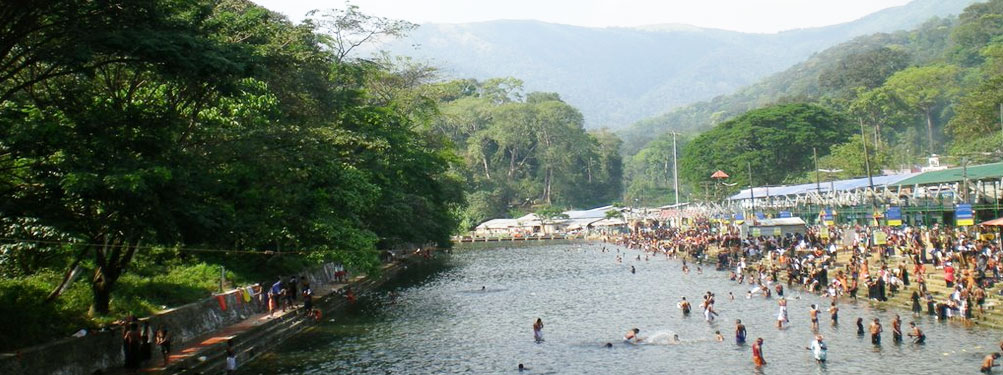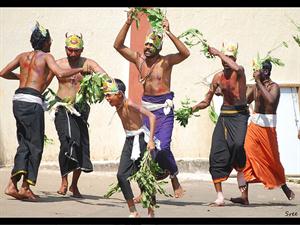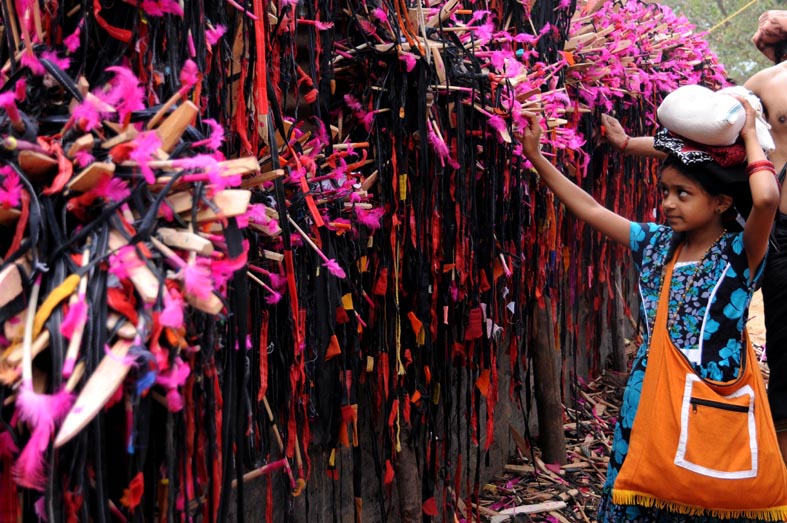How to reach the temple of Lord Ayyappan from Erumeli
Sabarimala is one of the most popular pilgrimage centers in the whole world. The annual pilgrimage season lasts less than 60 days (mid-November to mid-January) and during this period millions of devotees trek the hills to obtain the darshan of their favorite deity – Lord Ayyappan. The chanting of sarana mantras (Swamiye Saranam Ayyappa) fill the air during this season and the general atmosphere is pious. Most Hindu homes in South India have at least one pilgrim observing the austerities to visit the temple.
Where is Sabarimala Temple?
The Sree Dharma Sastha Temple is located in the Sabari Hills (named after the pious woman Sabari mentioned in the Ramayana). The hills are part of the Periyar Tiger Reserve in the Pathanamthitta District. While most other Hindu temples in Kerala do not allow non-Hindus inside, the Sabarimala Temple is different. Anyone who has observed austerities for 41 days can climb the holy 18 steps and get the darshan of Ayyappan. Their caste, creed, religion, social or financial status is irrelevant here. That said, young women (aged between 10 and 55) cannot undertake this privilege. The temple also receives devotees from faraway places like the United States of America, Russia and Europe. What you witness here is a vast ocean of humanity wearing black or blue and chanting the names of Ayyappa Swami.

Sabarimala pilgrims taking a dip in the holy river Pamba
The holy trek begins from Pamba. Vehicles don’t go beyond that. The temple is about 6 kilometers from Pamba. The trek is through dense forests and devotees are not supposed to proceed alone. Typically they proceed in small or large groups. The senior most leader in each group is called Guru Swami. In order to obtain the status of Guru Swami, a person needs to have undertaken the pilgrimage several times. The word Guru means teacher and Guru Swami is a bit like a teacher who guides his disciples in the right direction. He performs a very important role during the pilgrimage. The pilgrims are required to receive their mudra mala (the chain of Rudraksha they wear around their neck) from their Guru Swami when the start observing the austerities.
For Sabarimala devotees the River Pamba which flows through the forest and near the shrine is as holy as the River Ganga which flows through Banaras. One of the biggest highlight of the trip is the delightful sights it offers. There are several traditional routes through which the shrine can be accessed. If you like to trek, the route commencing from Erumeli is a good choice. It is an arduous climb through the forest and covers a distance of about 45 kilometers. Devotees believe that Lord Ayyappan himself had taken this route when he went to the forest to obtain the milk of a tigress to cure his step mother’s headache. Erumeli is about 56 kilometers to the south east of Kottayam. Before proceeding devotees pray at the temple of Lord Dharmasastha and then at a mosque named after Vavar Swami, who was a trusted companion of Lord Ayyappan.

Pilgrims dance with abandon at Erumeli before proceeding with the trek to Sabarimala
At Erumeli devotees perform an important ritual called Petta Thullal. They apply various colors on their face and dance with wooden sticks. After performing this ritual, they proceed from Erumeli and stop when they reach Perur Thodu. Lord Ayyappa is believed to have rested by the side of this canal before killing the demoness Mahishi. From here the climb begins through Ayyappan’s garden called Poogavanam (forest of flowers).
The next stop is at Kalaketti. Kala means ox in Malayalam. Kalaketti is the place when Lord Shiva tied his ox and stood watching Appayyan kill Mahishi. There is a small shrine here. Before proceeding with the trek, pilgrims pray here, burn camphor and break coconuts by smashing them against a hard surface. Ayyappan is said to have a special fondness for camphor.
Azhutha River, a tributary of Pamba, is about two kilometers from Kalaketti. After crossing the river, the pilgrims will start climbing the Azhutha Hill. It is an arduous and steep climb of about two kilometers before they reach its summit called Kallidumkunnu (the place where stones are dropped). The stones that pilgrims collected from the Azhuta River are dropped here. The next stop on the route is Inchipparakota. This is where the shrine of Kotayil Sastha located. Here also pilgrims break coconuts and offer prayers. From here they proceed through a slippery path down to Karimala Thodu. At this point the pilgrims can see the Azhuta Hill on their one side and the Karimala Hill on the other side. Most pilgrims rest here for a while. Since this place a favorite haunt of wild elephants, they lit campfires. The fire also protects them from the chilly air.

A little Malikappuram places her Saram (arrow) at Saramkuthi. This is a ritual performed by pilgrims who are on their maiden visit to Sabarimala.
The uphill trek to Karimala is about five kilometers long and from here it is an exhausting descent of about five kilometers until one reaches River Pamba. Pamba is a holy river and the water of this river is said to have medicinal properties. Devotees believe that taking a dip in Pamba will purify their body and mind. Devotees bathe in the river, offer prayers and then proceed to Sannidhanam, the temple of Ayyappan. The shrine is about six kilometers from Pamba. Devotees first pray at the Pamba Ganapati Temple and then start climbing Neelimala (blue mountains). This is an exhausting climb up to Appachi Medu. From here until Sabari Peetam, the journey is relatively easy because there are no steep ascents or descents. Pilgrims offer prayers here also. Saramkuthi lies midway between Sabari Peetam and Sannidhanam. Pilgrims who are on their maiden visit to the temple (Kanni Swamikal) are required to get wooden arrows from Erumeli before starting the trek. They leave those arrows at Saramkuthi. Saram in Malayalam means arrow. Ayyappan’s temple is about a 15 minutes’ walk from Saramkuthi.
Getting there
The nearest railway is the Chengannur Railway Station which is about 53 km away.
